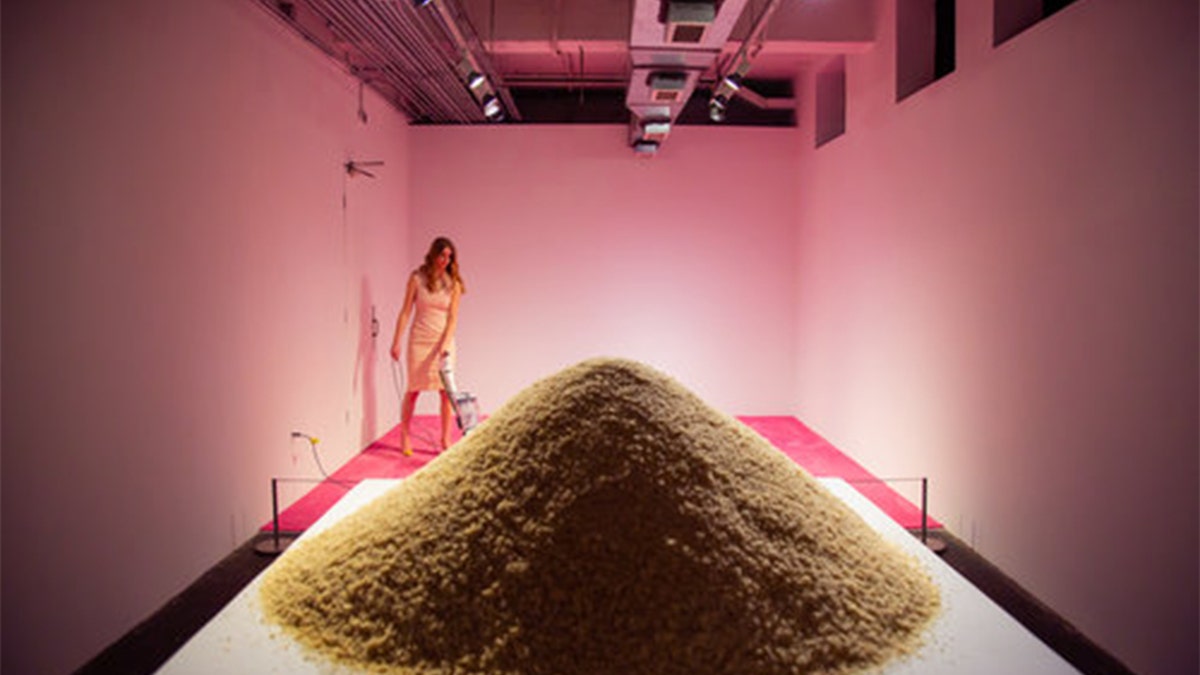
An Ivanka Trump look-alike vacuums at a recently launched art exhibit in Washington, D.C. (Ryan Maxwell Photography)
Ivanka Trump shot back Tuesday after a Washington, D.C. museum launched an exhibit featuring a look-alike of her on a pink carpet and inviting onlookers to toss crumbs for her to vacuum up.
“Women can choose to knock each other down or build each other up,” Trump said on Twitter. “I choose the latter.”
DC ART EXHIBIT FEATURES IVANKA TRUMP LOOK-ALIKE, VACUUMING, INVITES VISITORS TO TOSS CRUMBS AT HER
“Ivanka Vacuuming,” by artist Jennifer Rubell, is an exhibit that CulturalDC is running at the Flashpoint Gallery until Feb. 17. The exhibit features a woman, who looks startling like President Trump’s eldest daughter, clad in a pink dress and stilettos while wielding a vacuum next to a giant pile of bread crumbs.
“Inspired by a figure whose public persona incorporates an almost comically wide range of feminine identities -- daughter, wife, mother, sister, model, working woman, blonde— ‘Ivanka Vacuuming’ is simultaneously a visual celebration of a contemporary feminine icon; a portrait of our own relationship to that figure; and a questioning of our complicity in her role-playing,” a press release for the exhibit says.

(Ryan Maxwell Photography)
In front of the Ivanka look-alike, viewers will see a “white pedestal” with a giant pile of crumbs, of which visitors are invited to add too by throwing more crumbs, then “watching as Ivanka elegantly vacuums up the mess, her smile never wavering.”
“Here is what’s complicated: we enjoy throwing the crumbs for Ivanka to vacuum,” Rubell said in a statement. “That is the icky truth at the center of the work. It’s funny, it’s pleasurable, it makes us feel powerful, and we want to do it more.”
CLICK HERE TO GET THE FOX NEWS APP
She added: “We like having the power to elicit a specific and certain response. Also, we know she’ll keep vacuuming whether we do it or not, so it’s not really our fault, right?”
A press release for the exhibit explains that throwing the crumbs, and Ivanka vacuuming them, “is not a stand-in for one feeling, one relationship or one point of view toward this powerful and sexualized female form,” but instead is “intentionally open to multiple, often contradictory interpretations that are critical of the interpreter as they are of the subject.”




